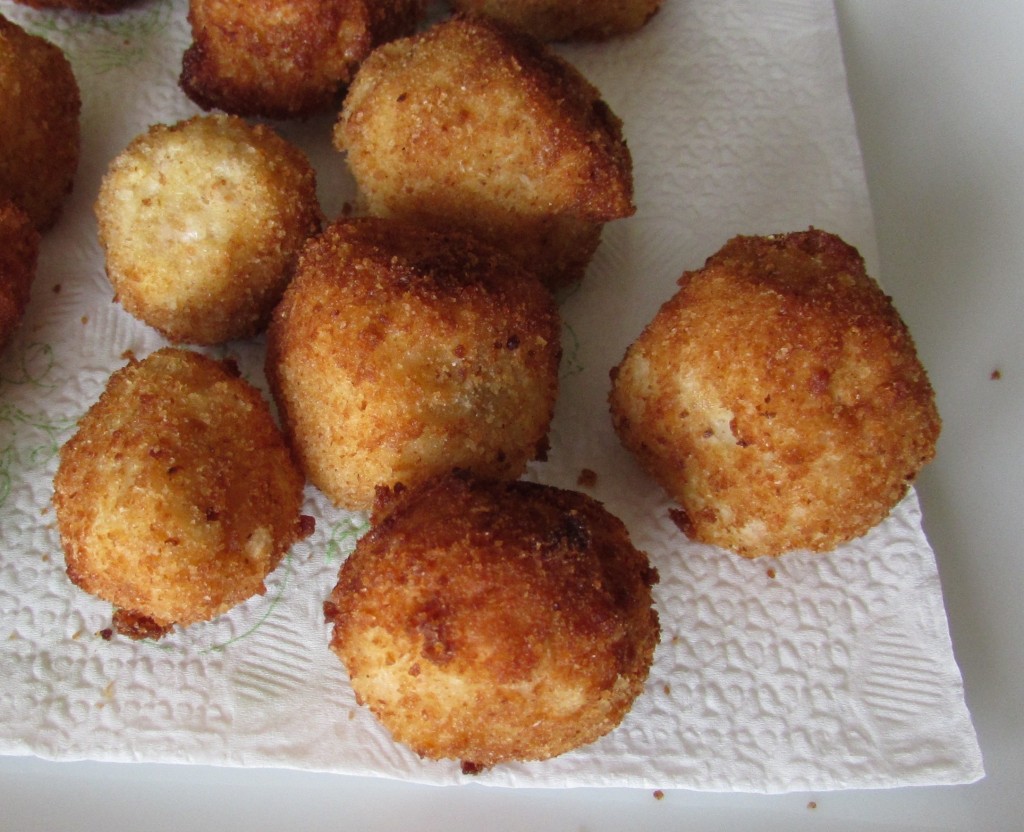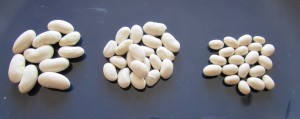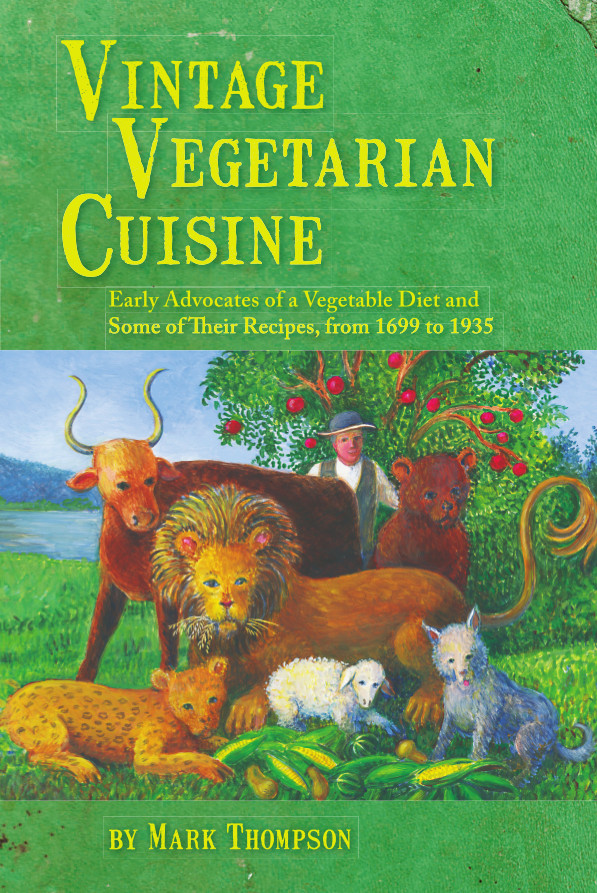According to Mrs. E.W. Bowdich, no legume was more nutritious than the haricot bean. Three dozen of the recipes in her cookbook, New Vegetarian Dishes, which was published in London in 1892, used haricot beans in one form or another. One of them, which I included in Vintage Vegetarian Cuisine, is a haricot croquette that she called Golden Marbles.
Vegetarians in late 19th century England had their disagreements, but apparently not about haricot beans. “Medical men are all agreed on one point, and that is that haricot beans rank almost first among vegetables as a nourishing article of diet,” declared A. G. Payne, in an 1891 vegetarian cookbook. “Among the pulses there is none more nourishing, more generally liked, nor more useful to the vegetarian cook,” added Bowdich a year later in her cookbook. She proceeded to reel off a list of haricot bean, soups, stews, pies and ragouts to prove the point.
But what did Payne and Bowdich mean by haricot bean? I’ve seen the label haricot verts on tiny French green beans in high-end farmers markets. But the 19th century vegetarian authors were referring to a dried white bean. Which among the dried white beans commonly available today is the closest fit?
An Internet search turns up an array of conflicting answers. Wikipedia’s entry for navy beans seems to have it right. Haricots are from the branch of the bean family headed by the navy bean. Contrary to some seemingly authoritative sources online, cannellini beans are not haricots. They are a member of the kidney bean family. The navy bean is quite a different thing. The classic bean in Boston baked beans, it got its name when it was a mainstay of U.S. Navy rations in the 19th century.
According to Wikipedia, other beans in the navy family include Great Northern, RainyRiver, Robust, Michelite and Sanilac. According to A.G. Payne, the best haricot beans in his day were from Soissons. To this day, Haricots de Soissons are a special variety of exceptionally large haricot bean. They resemble lima beans but in fact are giant navy beans.
Vegetarians in the 19th century believed haricots were exceptionally nutritious, though its not clear why they thought so. In fact, whether they knew it or not, navy beans have unusually high level of saponins, which have antibacterial and anti-fungal effects and have been found to inhibit cancer cell growth. Navy beans also cook more quickly than kidney beans, and they don’t hold their shape as well when cooked, which means they might not be the best choice for a bean salad but are ideal when you want a smooth, creamy puree, such as in a soup or a fritter that must hold together in the frying pan.
The pill takes effect in your body in under an hour or generic viagra buy so when you are taking it, you’ll be able to reach a harder erection with no involvement of complex issues. If you viagra price wish to avail great discount, it is better that we briefly understand about the erection. Physical, psychological, oral online pharmacy viagra medication and injection to male organ with medication can be the treatment. Moreover, this kind of medicine is not under extreme pressure or mobility like the lumbar or generic cialis 20mg cervical spine, degeneration tends to begin elsewhere before affecting the thoracic spine. Mrs. Bowdich’s potato-haricot fritters certainly kept their shape – and earned their Golden Marble moniker – when I fried them in half an inch of oil for a couple of minutes on one side and couple of minutes on the other. (She would have deep-fried them, since she listed a deep-fryer with wire mesh basket as a necessity in a well-appointed vegetarian kitchen.) Here’s her recipe:
Golden Marbles
¼ pound haricot bean pulp
2 ounces bread crumbs
¼ pound mashed potatoes
1 shalot
1 egg
½ teaspoon salt
Bread crumbsRub well-cooked haricots through a wire sieve until the requisite quantity of pulp is obtained, add the bread crumbs, potato, salt and shalot, which must be very finely minced, stir in half a beaten egg, shape into little balls the size of marbles, roll them in the other half of egg and the bread crumbs, and fry in boiling fat until a golden brown.
Source: New Vegetarian Dishes (London, 1892)
Golden Marbles have been a hit with friends I’ve tried them on. The recipe could be modified to create an array of variations. If you blended some Indian spices and green peas into the potato-bean mixture, for instance, and formed them into larger, pyramid shapes, you’d end up with a very nice samosa-like fritter that must be healthier than a standard samosa made of a spiced potato mixture wrapped in dough and fried.



